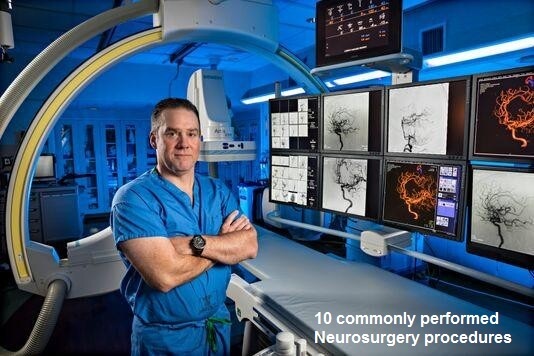There are different types of health problems that may affect both genders and among all ages. The truth is that new diseases and ailments are being identified with each passing day. Those remedies that previously did not have any remedy now are being treated and the patient offered a new life. One such health ailment is with the human nerves that are connected to the brain and at times when affected, makes the person helpless and to search for the best neurosurgeon in Delhi.

Consulting the neurosurgeon
Neurosurgeons are considered to be experts who are specialists to operate on the spinal cord, brain along with other intricate structures related to the nervous system. The neurosurgeons during their academic career are said to undergo rigorous training programs to become specialists in the domain and to offer a top quality remedy to their patients. They spend about 4 years in college and 4 years in medical school and around 6 years in residency. The time, the doctor is given a license to become a neurosurgeon practitioner, he/she is likely to have spent about 14 years of time in school.
They are also termed popularly as brain surgeons and spend their time mostly on treating spine related issues. There are numerous neurosurgical procedures that these professionals are known to undertake, some of which are considered to be quite complicated. This is where their training comes into purview.
Some of the common procedures undertaken by the neurosurgeons are:
- Chiari Decompression: Arnold-Chiari malformation although uncommon in nature is regarded to be a defect arising in the brain part which controls balance. There is a genuine need to correct it to ensure that the patient witnesses coordination and balance improvement. The different legitimate treatment options offered to involve surgical procedures. Chiari decompression is a simple and safe neurosurgical option involving removal of the bone at the skull’s back portion.
- Anterior Cervical Discectomy: Pain is experienced by many at the neck region at some point of time in life. But, if the pain is caused due to a herniated disc, then it can be unbearable and at times require surgical remedy. A delicate and common procedure is undertaken from the front while performing anterior cervical discectomy to eliminate the damaged disc. This is because the latter presses the spinal cord or the nerve root.
- Epilepsy surgery: If pharmacological treatments do not provide a remedy to epileptics, then surgical options are to be considered. The common procedures involve elimination of the brain portion which produces potentially fatal and uncontrollable seizures.
- Craniectomy: There are countless victims suffering from traumatic brain stroke and injury who have been given second life with this procedure. Here, there is removed part of the skull to provide ample space to the swelling brain and ensuring it does not get crushed.
- Lumbar Puncture: It is an effective and simple test to diagnose meningitis treat different types of diseases associated with central nervous system and lumbar puncture.
- Laminectomy: It is a minimally invasive surgical procedure requiring small incisions only on the skin to access and eliminate the lamina, part of vertebral bone. It is also called decompression surgery, commonly offered to those suffering from chronic back pain.
- Spinal fusion: This is considered to be an important surgical procedure for patients suffering from any traumatic injury or degenerative disease. It helps the spine to be in a stable condition and is used as a last resort.
- Microdiscectomy: It is perhaps among the most popularly availed neurosurgical procedure. It is used commonly for providing treatment to those patients suffering from painful herniated discs within the lumbar region.
- Ventriculostomy: It is stated to be an alternative to treat hydrocephalus, considered to be a ventriculostomy which uses a tube for draining a build-up of fluids within the brain region.
- Ventriculoperitoneal Shunt: Patients suffering from hydrocephalus are provided with this treatment, where there is done shunt implantation to drain excess fluid as well as to provide relief to the pressure created on the brain region.
The above is just a small list of the different types of procedures that are performed commonly by the best neurosurgeon in Delhi. The above list gives a clear idea and understanding as to what these specialists have on offer and how the patients can be treated and given relief.